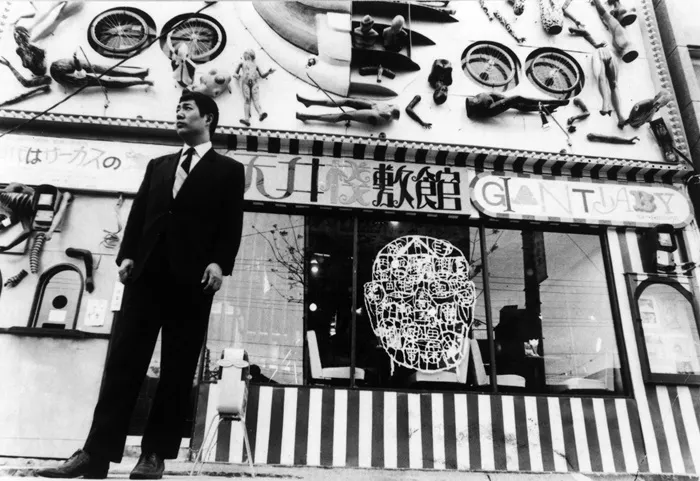The landscape of 20th century Japanese poetry was shaped by many innovative and influential figures, among whom Shūji Terayama stands out as a unique and provocative voice. Though not always the first name that comes to mind when discussing Japanese poetry, Terayama’s work exemplifies the dynamic experimentation and cultural ferment that characterized the postwar era. As a Japanese poet, playwright, filmmaker, and avant-garde artist, his contributions expanded the boundaries of traditional Japanese poetry and helped redefine its role in contemporary society.
Early Life and Context
Born in 1935, Terayama grew up during a time of great turmoil and change in Japan. The shadow of World War II and the subsequent American occupation influenced the cultural and social environment in which many 20th century Japanese poets developed their art. This period saw a transition from classical forms to more experimental and individualistic expressions. Terayama’s generation was particularly interested in breaking free from the constraints of conventional literary norms and exploring new ways of poetic expression.
Terayama’s Approach to Japanese Poetry
Shūji Terayama’s poetry is known for its surreal imagery, raw emotion, and often rebellious tone. Unlike many of his contemporaries who leaned toward subtlety and refinement, Terayama embraced a bold, almost confrontational style. His poems frequently challenged societal norms and explored themes of freedom, identity, and the absurdity of life. This approach reflected broader trends among 20th century Japanese poets who sought to articulate the complexities of modern existence.
Terayama’s work also stands out because of his multidisciplinary approach. He combined poetry with performance, theater, and film, creating a multimedia experience that extended the reach of his poetic vision. This was somewhat uncommon among his peers, many of whom focused primarily on written verse. His use of experimental theater and underground films helped push the boundaries of how poetry could be experienced and understood.
Comparison with Other 20th Century Japanese Poets
To better understand Terayama’s place within the pantheon of 20th century Japanese poets, it is useful to compare him with other prominent figures of the period, such as Shuntarō Tanikawa and Tōta Kaneko.
Shuntarō Tanikawa, born in 1931, is one of the most widely read and respected Japanese poets of the era. His poetry tends to be more accessible and lyrical, often reflecting on everyday life and universal human experiences. In contrast, Terayama’s poetry is more fragmented, surreal, and provocative. While Tanikawa’s work has a meditative quality, Terayama’s is raw and experimental.
Tōta Kaneko, another contemporary born in 1919, was known for his haiku, a traditional Japanese poetic form. Kaneko revitalized haiku with a modern sensibility, blending traditional structure with contemporary themes. Terayama’s work diverged from this tradition, opting instead for free verse and a multimedia approach, highlighting the diversity of Japanese poetry in the 20th century.
This diversity demonstrates how 20th century Japanese poets navigated the tension between tradition and innovation. Terayama’s contribution is significant because he pushed the limits of poetic form and content, influencing not only literature but also theater and film.
Themes and Motifs in Terayama’s Poetry
Central to Terayama’s poetry are themes of alienation, rebellion, and the search for personal freedom. He often used shocking or surreal imagery to disrupt conventional expectations and provoke thought. For example, his work frequently includes grotesque or dreamlike scenarios that challenge the reader’s sense of reality.
Another important motif is the critique of authority and social norms. Terayama was deeply skeptical of political and cultural institutions, a sentiment that resonated with many postwar Japanese artists who experienced censorship and repression. His poetry, therefore, is often a form of resistance.
Moreover, Terayama’s fascination with childhood and innocence contrasts with his darker themes, creating a complex emotional landscape. This juxtaposition highlights the contradictions of modern life, a common concern among Japanese poets of the 20th century.
Influence and Legacy
Shūji Terayama’s influence extends beyond poetry into the broader fields of Japanese art and culture. His innovative blend of poetry, theater, and film inspired a generation of artists to explore interdisciplinary approaches. The underground theater scene in Japan owes much to his pioneering spirit.
Although Terayama’s poetry may not have achieved the mainstream popularity of some of his contemporaries, his work remains a vital part of Japan’s literary heritage. Modern Japanese poetry continues to draw on his themes of personal freedom, social critique, and artistic experimentation.
His legacy also lives on in international circles, where he is recognized as a key figure in avant-garde art. Terayama’s ability to merge different artistic medias makes his work a valuable subject of study for those interested in the intersections of poetry, theater, and film.
Conclusion
The study of 20th century Japanese poets reveals a rich and diverse poetic landscape, with Shūji Terayama representing one of its most radical and innovative voices. As a Japanese poet, Terayama’s work broke new ground in form, content, and interdisciplinary art. His poetry challenged norms, embraced surrealism, and explored the complexities of modern life in postwar Japan.
By comparing Terayama with other notable poets like Shuntarō Tanikawa and Tōta Kaneko, one can appreciate the range of approaches Japanese poetry took during the 20th century—from traditional haiku to lyrical verse to experimental multimedia work. Terayama’s contribution lies in his fearless exploration of the avant-garde and his profound impact on Japanese culture beyond poetry alone.
In summary, Shūji Terayama is an essential figure in the history of Japanese poetry, embodying the spirit of innovation and resistance that defined many 20th century Japanese poets. His work continues to inspire and challenge readers, ensuring his place in the canon of modern Japanese literature.

